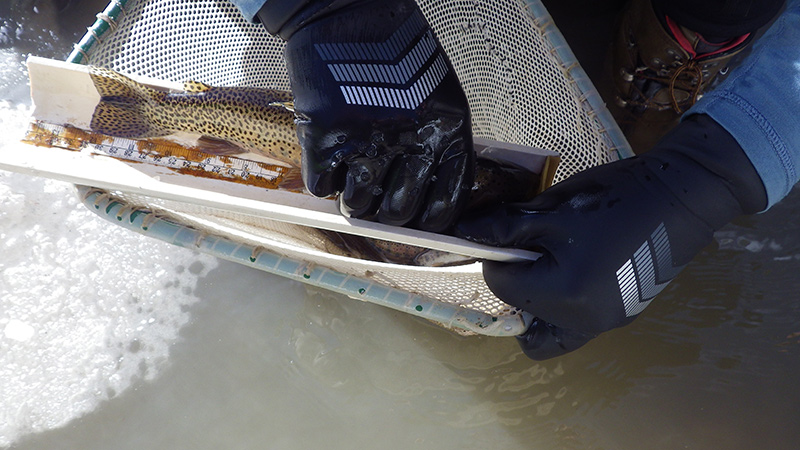The Montana Department of Environmental Quality (DEQ) released analyses of water quality and fish population results and concluded that aquatic life was affected by the Yellowstone Club spill.

Montana Department of Environmental Quality Sampling Sites on Second Yellow Mule Creek, South Fork (of the West Fork), West Fork (of the Gallatin River), and Gallatin River.
On Thursday, March 3, 2016 a mechanical failure in a reclaimed wastewater storage pond on Yellowstone Club property discharged approximately 30 million gallons of treated effluent into the Second Yellow Mule Creek drainage, and subsequently the Gallatin River.
The DEQ collected samples at 10 sites from March 5 to March 12, 2016. Seven sampling sites were located on affected water bodies, while three of the sites were located upstream of the affected area and used to establish baseline conditions. These results were combined with a fish population survey conducted by Montana Fish Wildlife & Parks at 4 sites on the South Fork on March 10, 2016.
According to the DEQ, ammonia, turbidity, and total suspended solids surpassed levels predicted to affect aquatic life. Ammonia is a naturally occurring compound of nitrogen and hydrogen. In excess, ammonia is toxic to aquatic life. The toxicity of ammonia depends on the concurrent pH and temperature of the water.
Turbidity is a measure of water clarity, while total suspended solids indicates the amount of organic or inorganic material suspended in water. Excess material in water can clog the gills of fish and aquatic insects. The solids that settle out fill the interstitial spaces between rocks destroying vital insect habit and spawning ground for trout.
Ammonia concentrations exceeded Montana’s standard (4.13 mg/L) in Second Yellow Mule Creek on March 5th; however, ammonia levels quickly dissipated downstream and with each subsequent day. Typically, bacteria convert ammonia to nitrate during the wastewater treatment process. This biologically-mediated process is less effective during cold water, which caused higher ammonia levels than expected.
Water measured at the outfall of the wastewater effluent pond was relatively clear. However, the effluent spill eroded the steep, loosely consolidated hill below the pond and carried sediment to Second Yellow Mule Creek. The Montana DEQ allows a 5 NTU increase in turbidity above baseline conditions. Turbidity results exceeded this margin at all sites from March 5 to March 12, and was as high as 1,686 NTU in Second Yellow Mule Creek. Total suspend solids were elevated during the initial days of the spill, but the Gallatin River returned to background conditions several days later.
 Limited fish mortality corroborated water quality data. FWP found five dead west slope cutthroat directly below Second Yellow Mule Creek. Fish population distribution suggested that both trout and sculpin fled downstream in response to water quality impacts.
Limited fish mortality corroborated water quality data. FWP found five dead west slope cutthroat directly below Second Yellow Mule Creek. Fish population distribution suggested that both trout and sculpin fled downstream in response to water quality impacts.
Any potential long term effects are still poorly understood. Persistent fine sediment may affect cutthroat trout spawning and has the potential to mobilize excess nutrients deposited after the spill. Excess nutrients contribute to algal blooms, which deplete oxygen dissolved in water. The DEQ recommends future fish population, water quality, and macro invertebrate monitoring. The DEQ plans to determine if and at what level future monitoring is necessary in July 2016 based on results and any potential remediation action.
This is the second of three parts of a report by the Montana Department of Environmental Quality. The next part will focus on pharmaceuticals. Read the full “Wastewater Spill into the Upper Gallatin River Watershed: Part 2. Effects on Aquatic Life” report here.


